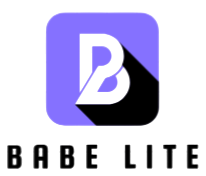Why More People Are Choosing Sclerotherapy for Spider Vein Removal?
In recent years, sclerotherapy has gained significant popularity as a preferred treatment for spider vein removal. This minimally invasive procedure offers several advantages that make it an attractive option for many individuals seeking to improve the appearance of their legs and enhance their overall vascular health. The increasing prevalence of spider veins, driven by factors such as aging, genetic predisposition, hormonal changes, and lifestyle habits, has led to a surge in demand for effective and safe treatments. Sclerotherapy meets this demand by providing a highly effective solution with a range of benefits that appeal to a broad demographic. One of the primary reasons more people are choosing sclerotherapy is its proven efficacy in treating spider veins. Sclerotherapy involves injecting a sclerosing agent directly into the affected veins, causing them to collapse and eventually be reabsorbed by the body. This process significantly reduces the visibility of spider veins, often after just one or a few treatments. Clinical studies and patient testimonials consistently report high success rates, with many individuals experiencing substantial improvement in the appearance of their veins.

This high level of effectiveness provides patients with confidence in the treatment, encouraging its widespread adoption and read more here. Another compelling reason for the popularity of sclerotherapy is its minimally invasive nature. Unlike surgical options, sclerotherapy does not require incisions, anesthesia, or extended recovery periods. The procedure is typically performed in a doctor’s office and takes about 30 to 45 minutes, depending on the number and size of the veins being treated. Patients can usually return to their normal activities immediately after the treatment, making it a convenient option for those with busy lifestyles. The minimal downtime associated with sclerotherapy is particularly appealing to working professionals and active individuals who cannot afford lengthy recovery periods. The safety profile of sclerotherapy also contributes to its growing popularity. While all medical procedures carry some risk, sclerotherapy is generally considered safe when performed by a qualified healthcare provider.
Side effects are typically mild and may include temporary bruising, redness, or swelling at the injection site. Serious complications are rare, and the overall risk is low compared to more invasive treatments. This favorable safety profile reassures patients and makes sclerotherapy an attractive option for those concerned about potential adverse effects. Cost-effectiveness is another factor driving the increased preference for sclerotherapy. The cost of sclerotherapy is generally lower than surgical alternatives, making it accessible to a broader range of patients. Many insurance plans cover the procedure when it is deemed medically necessary, further reducing out-of-pocket expenses for patients. The combination of effectiveness, convenience, and affordability positions sclerotherapy as a cost-effective solution for spider vein removal. In addition to its practical benefits, sclerotherapy also offers significant psychological advantages. Spider veins can be a source of embarrassment and self-consciousness for many individuals, affecting their confidence and quality of life. By effectively reducing or eliminating these veins, sclerotherapy can improve self-esteem and body image.
